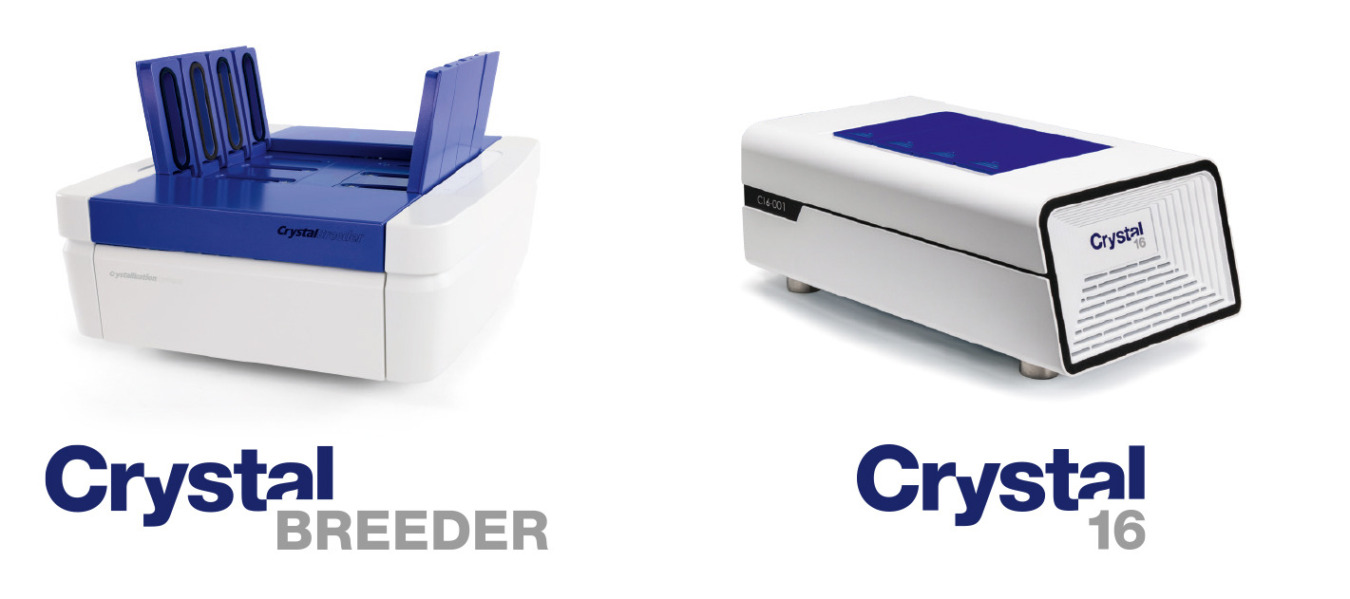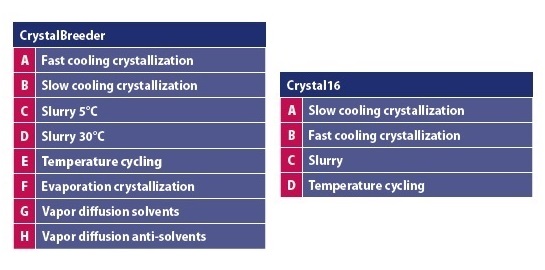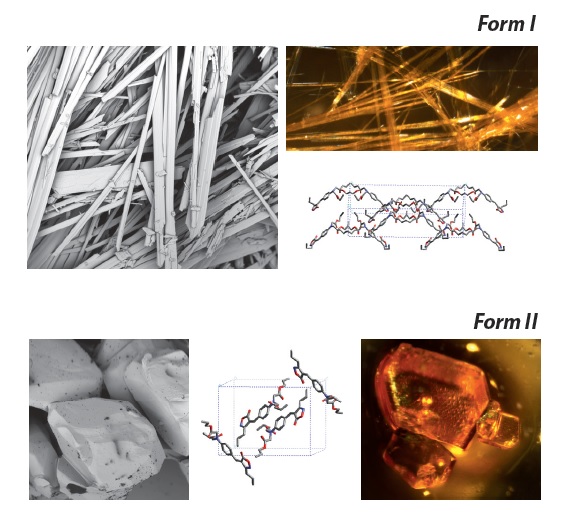Every day, new compounds are produced within food, personal care, dye, agro and pharmaceutical industry. These compounds are getting more and more complex, making dosage determination and formulation more difficult. In order to obtain the solid state form with desired properties, solid state screening needs to be performed. Polymorph screening is still most widely applied.
Performing your polymorph screen using the CrystalBreeder or Crystal16 enables control over the temperature, cooling/heating rate, stirring rate, concentration and solvent. Automating your solid state screening process enables you to perform the crystallization experiments with just a small amount of effort.
One Crystal16 can run up to 16 experiments in parallel at 1-mL scale. The CrystalBreeder can run up to 32 experiments in parallel at 0.1-mL scale. Reproducibility and controllability enable you to perform good science and meet regulatory requirements.
Additionally, the CrystalBreeder allows you to perform evaporation crystallization or cooling evaporation experiments at a controlled evaporation rate.

A typical polymorph/crystallization screen of 32 experiments performed on a CrystalBreeder would run by using 5 crystallization methods as shown at the right. A typical polymorph/crystallization screen on the Crystal16 would include at least 16 experiments by using 3 crystallization methods: cooling crystallization, slurry and temperature cycling. An example is given here.

A crystallization/polymorph screening was conducted at Radboud University Nijmegen on isoxazolone dye by using both CrystalBreeder and Crystal16 systems in parallel. The choice of solvents was made considering the solubility information of the compound in a larger set of solvents. Four different solvents could be chosen for the crystallization experiments. Two different cooling profiles could be applied for cooling crystallization (e.g. a fast and a slow cooling rate of 5 °C/min and 0.1 °C/min).
Additionally, one can also choose for 2 ripening times (short ripening to capture unstable or kinetically stabilized forms and long ripening to allow more stable forms to appear). Different concentrations and different crystallization temperatures can also be considered while designing the crystallization experiments. The compound was found to crystallize in two polymorphic forms: needles (form I), rhombic blocks (form II).
To fully characterize the solid forms obtained, screening experiments executed on the Crystal16 and CrystalBreeder are typically followed by analytical work using X-ray diffraction, microcopy, spectroscopic techniques and thermal analysis.

Curious to learn more?
Explore the features of CrystalBreeder and Crystal16 for fully controlled crystallization studies.